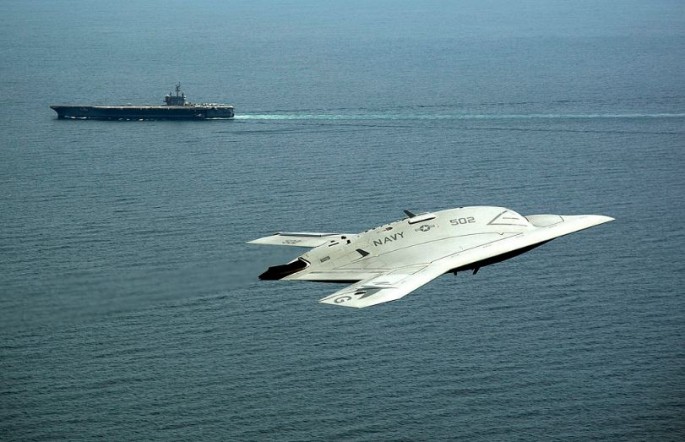The X-47B unmanned combat air vehicle (UCAV) originally intended as the U.S. Navy's first robot ground attack aircraft will instead function as an aerial refueling and reconnaissance drone with a limited strike capability.
The X-47B made by Northrop-Grumman was specifically designed for aircraft carrier-based operations. It's a tailless jet-powered blended-wing-body aircraft capable of semi-autonomous operation that first flew in 2011.
Northrop-Grumman wanted the prototype X-47B to enter service as the Unmanned Carrier-Launched Airborne Surveillance and Strike (UCLASS) system, which was to have begun operations with the U.S. Navy in the 2020s. The cancellation of the UCLASS project, however, killed any hope the X-47B would have entered Navy service as the "Stingray" reconnaissance and attack drone.
"We kind of revamped our strategy," said U.S. Navy Chief of Naval Operations Admiral John Richardson last February. "It has a legitimate role in terms of tanking, and I would say that (intelligence, surveillance and reconnaissance) is on the table, for sure."
Downgrading the Stingray to the role of an aerial tanker with reconnaissance capabilities marks an inglorious end to the combat version of this aerial drone that was to have changed the face of aerial warfare by proving drones could survive high-intensity combat.
As the MQ-25, the former Stingray's main mission will be "recovery tanking" where it refuels planes flying in a fixed orbit around an aircraft carrier. This method will allow Navy combat jets such as the F/A-18E/F Super Hornets to fly missions with enough fuel to return to their mother carriers. The Navy currently has no purpose-built refueling tanker that can land on and take-off from a carrier.
The Navy wants its MQ-25 drone tankers to fly at least three full loops around a carrier before it needs to refuel. The drone might carry up to 10,000 pounds of fuel on each flight.
The Navy plans to have the final MQ-25 design by 2018 and receive its first operational tanker drones by 2021. Northrop Grumman, Lockheed Martin, Boeing and General Atomics are expected to compete for the final contract.



























